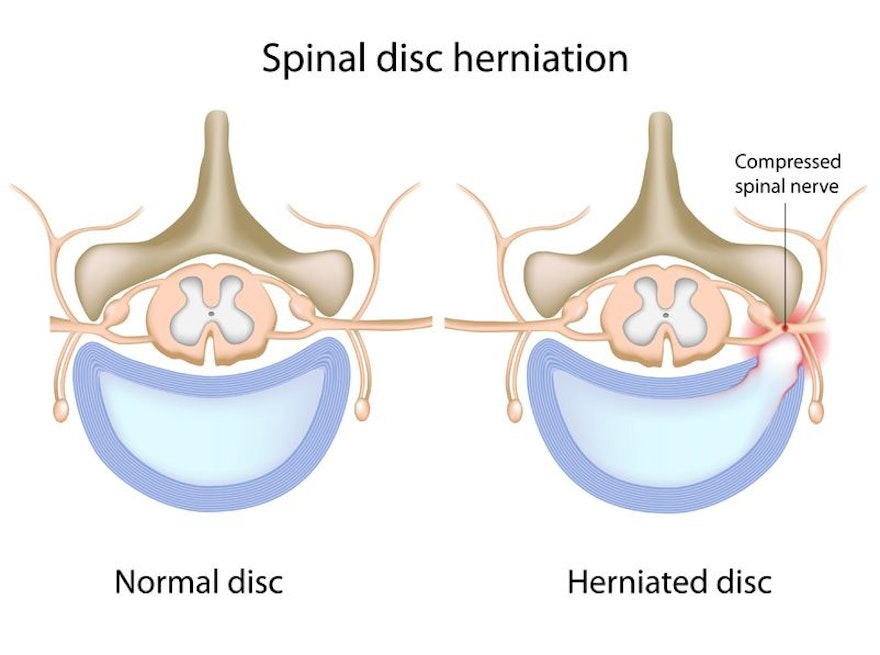The disc is a firm to soft cushion like structure between the two vertebral bodies of spine. Its primary role is to give shock absorption from various jerks and movements that our spine faces in day to day life and in sports activities. It also gives stability and flexibility to our entire spinal column.
However, it undergoes wear and tear with time. The speed of its wear and tear depends on the level and type of our physical activities and our posture.
A bad posture can result in speedy wear and tear.
The wear and tear results in back pain and discomfort. However in certain situations, the disc slips out of its confined space and pushes the nerve roots lying behind it. This results in the condition called Disc Prolapse.
The disc prolapse or disc herniation results in severe neurological pain (radicular pain).The pain shoots down the lower limb or upper limb like an electric current.
Precipitating factors
1. Constant sitting, standing and bending in wrong position.
2. Sudden jerk to back while lifting weight, sneezing, coughing
3. Deformities of spine due to some disease
Symptoms
The patient complains of sudden onset of back pain with shooting pain down the arm or leg. When the Upper spine (Cervical spine) is involved it causes pain in upper limb. When lumbar spine is involved it cause pain from buttock down the leg. Depending on the side of disc prolapse, the pain can be either on left or right side.
There is tilting of the back and patient finds difficult to sit or stand without support. Even lying down in certain positions is difficult. There may be sensation or power loss in the limbs depending on the severity of disc prolapse.

Treatment
Conservative Treatment
Initial treatment is complete rest, anti inflammatory medicines. Sometimes steroids are used to relieve neurological symptoms. Physio therapy is started early in the disease to provide relief from pain. The posture correction, activity modification are very important parts of treatment. Most of the patients respond to this conservative line of treatment.
In some patients, the symptoms are persistent despite the conservative treatment. In such cases, X rays and MRI are done to ascertain the diagnosis and the level of disc prolapse.
Epidural Injection and Nerve Root Block
In patients who don't get relief from conservative treatment, injection of steroid in epidural space at the site of disc prolapse, is a reasonable option. It reduces inflammation around nerve root and reduces radicular pain significantly.
Microsurgery of Disc
In patients with persistent pain and symptoms, removal of prolapsed portion of the disc will resolve the symptoms completely. With advent of MINI INVASIVE/MICRO SURGERY, the recovery is speedy and satisfactory. Certain patient may also need stabilisation of spine to prevent recurrence of symptoms.
Summary
To summarise,
- Correct posture, right exercises form most important aspect of successful treatment of disc prolapse.
- Those who have severe symptoms may need surgical treatment. However, correct surgery will result in complete resolution of symptoms and speedy recovery.
